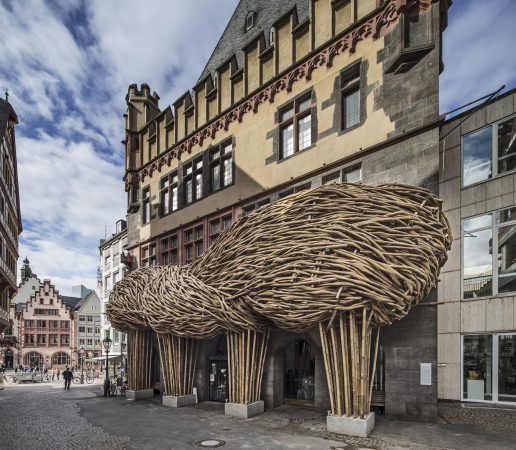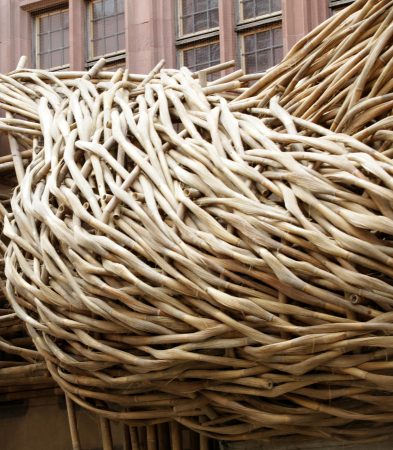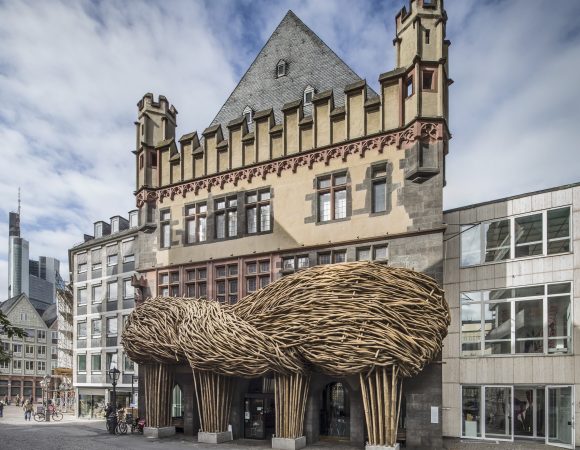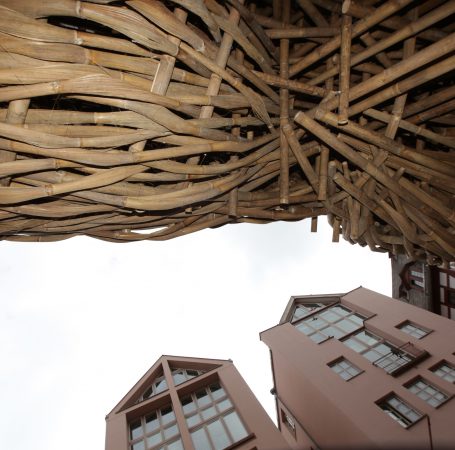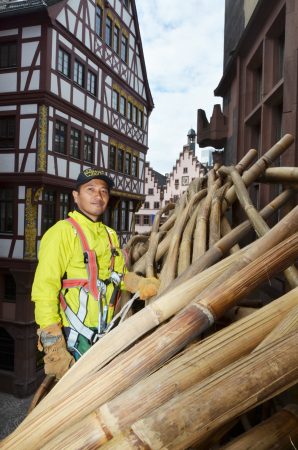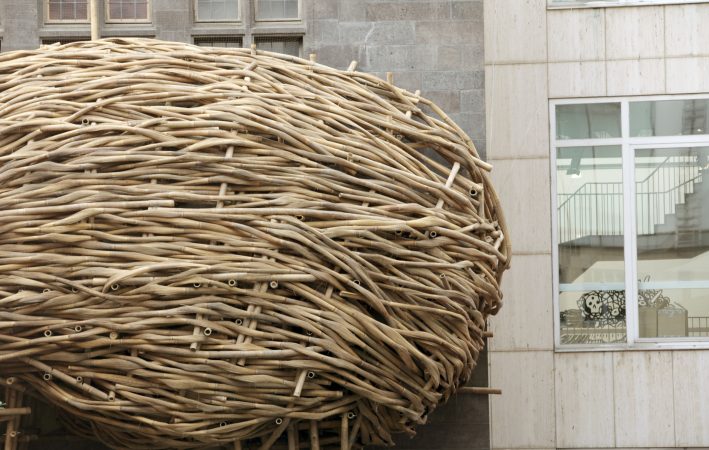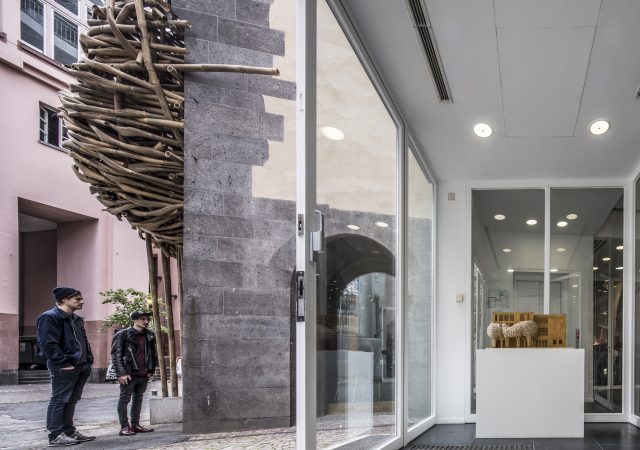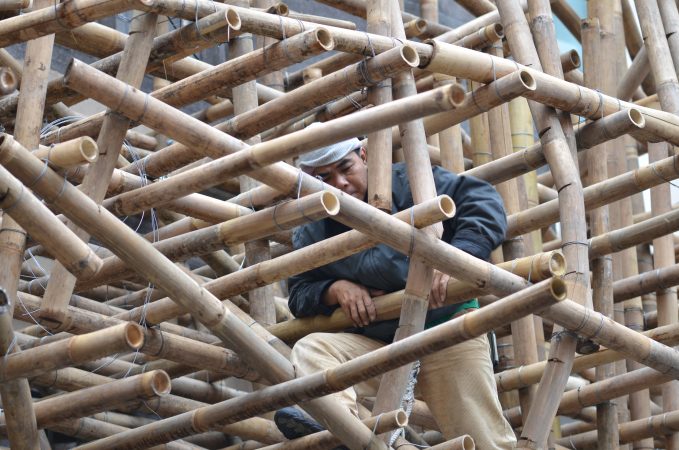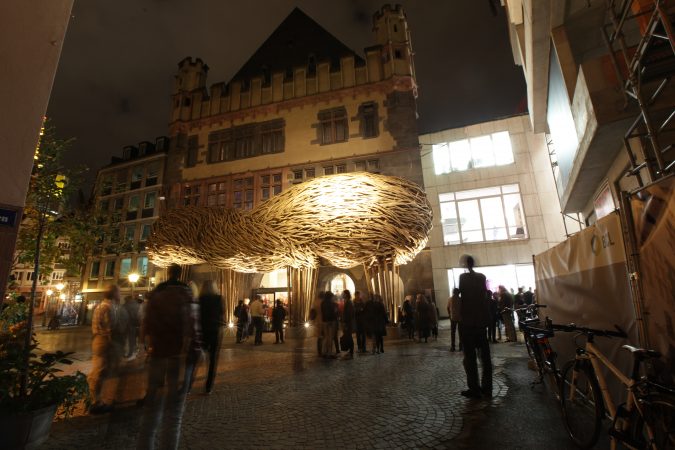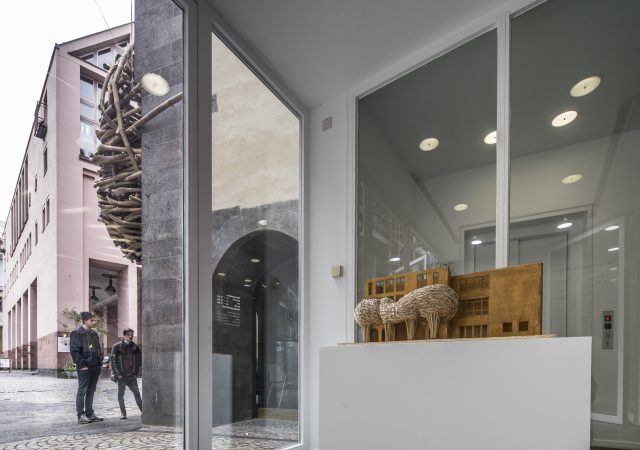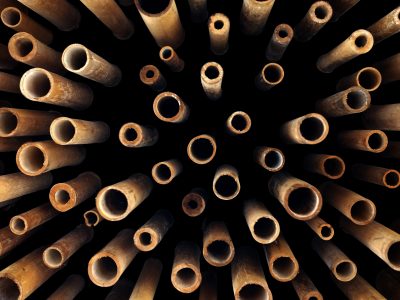Roots – Joko Avianto
born 1976, lives and works in Bali und Yogyakarta (ID)
BIG TREES (POHON BESAR), 2015
bamboo and concrete
Courtesy the artist
Joko Avianto’s “Big Trees (Pohon Besar)” is sculpture, architectural façade, and spectacle. Its scale and the artist’s choice of the simple but iconic bamboo as material underscores to global concerns pertinent to our time. These include the environment and effects of redevelopment and urbanisation, and experiences of displacement and marginalisation in the early 21st century. As a site-specific work, it reflects issues of the changing nature and values of space, in this case Frankfurt’s reconstructed old-city centre, which is a hub of culture and tourism. In this regard, Avianto responds to the loss of trees in the changing environment around the Frankfurter Kunstverein. This is combined with his experiences growing up in Indonesia. Traditionally, old trees have been an important feature in Indonesian public space, as places where people meet and socialize. However, such places are under increasing pressure from urbanisation and the effects of pollution.
“Big Trees (Pohon Besar)” is Avianto’s first commissioned work outside of Southeast Asia. Like his other site-specific works, it is meant to visually overwhelm the viewer, creating a different kind of spatial experience. Monumental in size, and being built directly at the Frankfurter Kunstverein building, it physically and metaphorically obscures the contemporary art space, while also serving as a gateway to it.
The work consists of 1525 woven stalks of bamboo (Bambu tali or gigantochloa kurz) imported from plantations in West Java. In the history of modern sculpture in Indonesia, bamboo is associated with traditional craft. It is a familiar material of daily life as both decorative form and functional object, but was rarely used as a material in modern sculpture. Its value as an artistic material began to shift in the 1980s and 1990s with the development of installation art. However, bamboo was still an uncommon material in contemporary sculpture when Avianto started experimenting with it in 2003 during his postgraduate studies at the Faculty of Art and Design, Institute of Technology in Bandung (ITB). Avianto borrows and reinterprets traditional Sundanese (West Java) weaving techniques to construct his exaggerated sculptural forms. His innovative process of cutting into the long compact fibres of the columns between each node of the bamboo stalk makes it pliable while maintaining its strength. This allows for the bamboo to be manipulated, bent and woven into soft curvilinear lines.
Fundamentally, Avianto is a formalist. His body of work shows the direct influence of renowned sculptor Rita Widagdo (Wizemann), for whom he was an assistant for three years. Rita Widagdo (b. 1938, Rottweil, Germany), studied in Stuttgart before moving to Bandung, West Java, in 1964. She was instrumental in the development of a formalist approach in sculpture at ITB.
An underlying concern for Avianto is the changing socio-economic and cultural values associated with bamboo cultivation. This includes the decline of village owned and cultivated bamboo forests in West Java due to a new wave of global industrialisation, and the aggressive monoculture of the palm oil industry.

